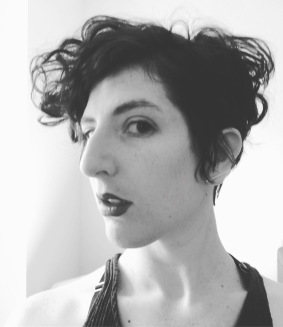ISSN: 1941-4137
POETRY THAT ENACTS THE ARTISTIC AND CREATIVE PURITY OF GLASS
POETRY THAT ENACTS THE ARTISTIC AND CREATIVE PURITY OF GLASS

Madeleine Wattenberg's work has recently appeared or is forthcoming in journals such as Best New Poets 2017, Tupelo Quarterly, Fairy Tale Review, Tinderbox Poetry Journal, and Mid-American Review. She regularly writes for the review site The Bind and is a PhD student in poetry at the University of Cincinnati.
An Inventory of Margaret Cavendish's Laboratory
An outside. An inside.
One can assume salt in a rough wet mouth.
Her father's house was not far from the sea.
An orange removed from under the hand's heel —
pressure at two poles.
A cut in the damp air. Light like a rind crescent.
It is impossible to round this world.
The boats ride on the waves in a geometry
of hollowed cells. Honeycomb.
A scientific animal. A crushed telescope.
Charcoal. Pipette nettle.
A privation of light. A fiction rattles in the centrifuge.
Bear-men. Bird-men. An emperor.
A bowl of seeds and a scalpel. A hypothesis.
A particular part cannot increase of itself.
The frozen men on long silver counters.
Cross-sections of stone.
As the daughter of a scientist, I'm fascinated by what occurs at the intersection between the poetic and scientific imaginations. In her proto sci-fi The Blazing World, Margaret Cavendish describes a boat that sails to the cold poles between two worlds: "Neither was it a wonder that the men did freeze to death," she writes, leaving only a woman to sail into "another world." Born in 1623, Cavendish was a scientist at a time when women weren't scientists. One way she navigated this male dominated realm was by building herself a laboratory out of language. This poem is a list of what I imagine populates Margaret Cavendish's laboratory, both in material and method — a laboratory shaped by the pressure of two worlds, interior and exterior, in which she performs a dissection of the gendered modes of knowledge formation.
Glass: A Journal of Poetry is published monthly by Glass Poetry Press.
All contents © the author.
All contents © the author.





